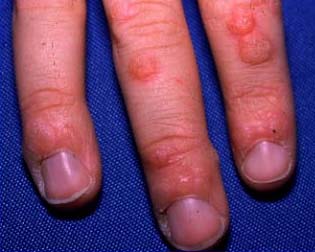
 Turning to friends for online information is the hot topic within the Web world, and in Mondaya??s New York Times Technology and Business section, Jenna Wortham writes about how a??Search Takes a Social Turn.a??
Turning to friends for online information is the hot topic within the Web world, and in Mondaya??s New York Times Technology and Business section, Jenna Wortham writes about how a??Search Takes a Social Turn.a??
Online sites are taking notice of what people like.??Web companies are trying to make searching online for information more useful by tapping into the inner thoughts of what people like:
After a decade when search engines ruled supreme a?? tapping billions of Web pages to answer every conceivable query a?? many people now prefer getting their online information the old-fashioned way: by yakking across the fence.
Turning to friends is the new rage in the Web world, extending far beyond established social networking sites and setting off a rush among Web companies looking for ways to help people capitalize on the wisdom of their social circles a?? and to make some money in the process.
Listening and communicating
Listening and communicating with our friends can prove to be invaluable at times, and often they are our springboards for sharing our latest woes or trumpeting our successes.??Whatever the case, friends are ruling the social networking world and frankly their opinion matters. Friends can be invaluable, and the geniuses behind new technology companies are taking notice and creating online sites focused on what friends are sharing with friends.
Trust and better recommendations
We trust our friends, and one company taking notice of the friendsa?? trust factor and creating its content based on smart recommendations is a New York City start-up company, Hunch.
a??Hunch, a start-up based in New York, wants to go beyond cataloging the places and products for which your friends have already expressed affection. With some complex software, it tries to use that information to predict what other things you might like, even if nobody you know has ever offered an opinion on those things before,a?? writes Wortham.?? a??The service pulls in data about articles, topics and people that you and your friends have a??likeda?? on Facebook or follow on Twittera?|a??
Friendsa?? offer valuable information
While we value our friendsa?? opinions for the latest recommendations in movies, restaurants, hotels, TV shows, electronics and more, I was curious to find out if they are talking about health.
Health category
I dug a little deeper into Hunch and indeed, the health category is covered.??Sparingly, but people are talking about health.
From a??Ways to De-stress,a?? to a??Healthy Eating Habits,a?? to a??Exercises for Losing Weight,a?? and from Blood Pressure Monitors,a?? and a??Diabetes Monitoring Devices,a????to a??Cancer Specialist Hospitals,a?? to a??OTC Allergy Remedies,a?? and a??Yoga DVDs ,a?? to name a few; friends on are sharing their opinions, and Hunch has tapped into that.
The long-term goal is for Hunch is for a??a user to be able to come to Hunch looking for a smart recommendation on just about any topic, and after answering a handful of questions, get as good a recommendation as if she had interviewed a group of knowledgeable people or done hours of careful research online,a?? stated on the companya??s website.??a??Eventually, when Hunch gets good enough, we hope users will trust its recommendations without having to turn to lots of external time-consuming sources of information.a??
Friends are offering good recommendations to De-stress.??Take a vacation, read a good book and listen to music are the first three suggestions that round out the 49 recommendations.??Additionally, a??prosa?? and a??consa?? in some instances are mentioned and by clicking a??Learn morea?? you can find where the recommendation originates from.
Number 23 is from Andrew Weil, M.D. and offers the recommendation for a??Breathing exercisesa?? and thata??s a great tip to De-stress.
Be cautious
Caution comes when you get to number 49.??a??Take a Lorazepam,a?? that is the recommendation to De-stress.??While there is a a??cona?? listed that states, a??Cons: This is a powerful anti-anxiety pill that should not be taken unless a person has clinically diagnosed anxiety. There are very serious side effects including withdrawal once stopped,a?? it makes sense for you to be in charge of your health and research a little further.
Along the same line is a??OTC Allergy Remedies.a????While your friends may be taking something to help their allergies, it doesna??t mean ita??s right for you.
Finding out from friends about the best movies, restaurants and travel is extremely helpful.??Finding health information can be very useful as well, however you should always check with your healthcare provider before diving into uncharted territories.
Friendly reminder
Our friendsa?? opinions are important to us, but ita??s also helpful to go to more than one source when searching for health information.??There are excellent health sites and blogs online that offer extremely useful and accurate information.??Always take the extra step when it comes to your health to find out whata??s right for you.??Be in charge and be an empowered health consumer.
Turning to friends
Clamoring with our friends about the latest gadgets, the hottest fashions, the best movies, favorite places to visit and health topics have captured the attention of technology companies, so remember your suggestions can impact many, many people in the social world.??What you like is impacting the way companies are creating technology.??Simply, your opinion matters.
Your turn
How important do you think your suggestions and recommendations are to your friends?
[Image - iStockphoto]



 Imagine a water bottle that knows how hard and how far you are running, how much you’re drinking, what’s the outside temperature, and, based on all these variables, the device calculates when you need to have a drink. Cambridge Consultants have developed the i-dration bottle that does just that.
Imagine a water bottle that knows how hard and how far you are running, how much you’re drinking, what’s the outside temperature, and, based on all these variables, the device calculates when you need to have a drink. Cambridge Consultants have developed the i-dration bottle that does just that.

 The British Medical Journal reported on a study of??toothbrushing and found that people with poor oral hygiene had an increased risk of cardiovascular disease and heart attack.
The British Medical Journal reported on a study of??toothbrushing and found that people with poor oral hygiene had an increased risk of cardiovascular disease and heart attack.

 New England Patriots NFL quarterback Tom Brady was on his way to practice when he crashed into a minivan which allegedly ran a red light.??His Audi S8 car T-boned the other vehicle a few blocks from his home.??A relieved New England Patriots owner Bob Kraft noted after the accident:
New England Patriots NFL quarterback Tom Brady was on his way to practice when he crashed into a minivan which allegedly ran a red light.??His Audi S8 car T-boned the other vehicle a few blocks from his home.??A relieved New England Patriots owner Bob Kraft noted after the accident:











.jpg) Some interesting items this week involving hands.??The one which has gotten much news coverage is the issue of handwashing. Take a look at some of the headlines:
Some interesting items this week involving hands.??The one which has gotten much news coverage is the issue of handwashing. Take a look at some of the headlines: Turning to friends for online information is the hot topic within the Web world, and in Mondaya??s New York Times
Turning to friends for online information is the hot topic within the Web world, and in Mondaya??s New York Times